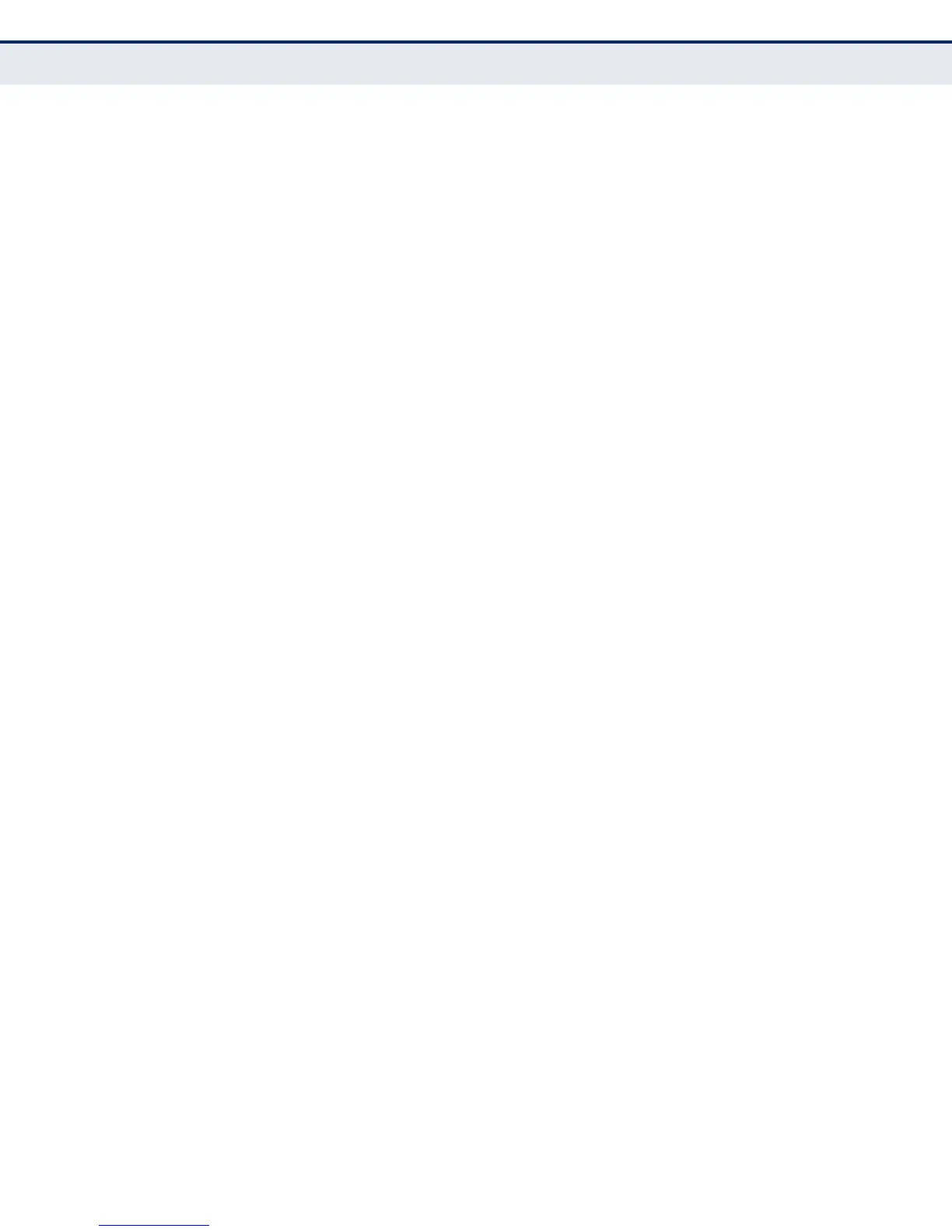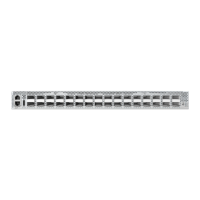C
HAPTER
9
| Congestion Control
Storm Control
– 263 –
◆ When traffic exceeds the threshold specified for broadcast and
multicast or unknown unicast traffic, packets exceeding the threshold
are dropped until the rate falls back down beneath the threshold.
◆ Traffic storms can be controlled at the hardware level using Storm
Control or at the software level using Automatic Traffic Control which
triggers various control responses. However, only one of these control
types can be applied to a port. Enabling hardware-level storm control
on a port will disable automatic storm control on that port.
◆ The rate limits set by this function are also used by automatic storm
control when the control response is set to rate control on the Auto
Traffic Control (Configure Interface) page.
◆ Using both rate limiting and storm control on the same interface may
lead to unexpected results. It is therefore not advisable to use both of
these commands on the same interface.
PARAMETERS
These parameters are displayed:
◆ Interface – Displays a list of ports or trunks.
◆ Type – Indicates interface type. (100BASE-TX, 1000BASE-T,
100BASE SFP, 1000BASE SFP)
◆ Unknown Unicast – Specifies storm control for unknown unicast
traffic.
◆ Multicast – Specifies storm control for multicast traffic.
◆ Broadcast – Specifies storm control for broadcast traffic.
◆ Status – Enables or disables storm control. (Default: Enabled for
broadcast storm control, disabled for multicast and unknown unicast
storm control)
◆ Rate – Threshold level as a rate; i.e., packets per second.
(Range: 64-1000000 packet/sec, Default: Disabled)
WEB INTERFACE
To configure broadcast storm control:
1. Click Traffic, Storm Control.
2. Set the interface type to Port or Trunk.
3. Set the Status field to enable or disable storm control.
4. Set the required threshold beyond which the switch will start dropping
packets.
5. Click Apply.
